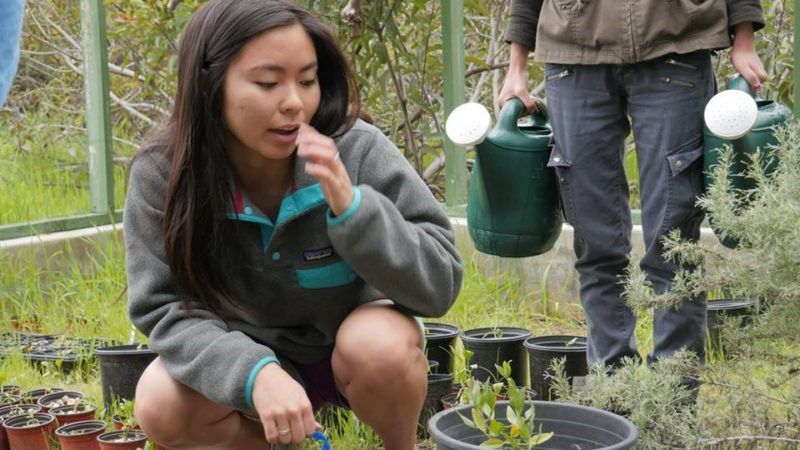
By Abir Hossain and Valeree Catangay
Continuing our transplanting process, we rounded up all of our team members and also reached out to friends who volunteered their time to plant the Encelia californicas. Although it was nice to have the sun out again, it punished us while we dug holes within each of our seven experimental plots. One thing we noticed right off the bat was the moisture content of the soil: it had become very dry, and as a result, much harder to weed and dig into as there hadn’t been any recent rain. Nevertheless, our team persevered and we managed to get the remaining 70 plants successfully transplanted within the plots, with ten plants in each plot. The selection of the plants was determined by size; we chose the larger plants in the nursery so they could be tagged, and also because they’re more likely to survive the transplanting process. There are still about 10-15 Encelia californica in the nursery, but our team has decided to allow them to grow a bit more as their small size isn’t favorable for transplanting. On top of successfully transplanting the sunflowers, the team is planning to meet with our stakeholders to discuss the contents of the Sage Hill sign. We plan to have information regarding the history of Sage Hill as well as the native fauna and flora there. Biodiversity is thrilled to see the results of both the transplanting process and Sage Hill’s signage!
